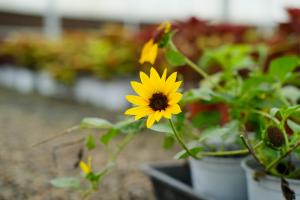How to Plant the Water Lily
Water lilies are beautiful aquatic plants that thrive in still, shallow waters. With their large, showy flowers and elegant green leaves, water lilies add a touch of luxury to any water feature. If you're interested in adding water lilies to your pond or water garden, here's how to get started:
Choosing the Right Water Lily
Before you start planting, you'll need to choose the right type of water lily for your water feature. There are many different varieties of water lilies to choose from, each with its own unique flower color, shape, and size. Some are better suited for large ponds or lakes, while others prefer smaller water gardens. Research the specific needs and characteristics of the different types of water lilies to choose the best variety for your water feature.
Preparing the Pond
Water lilies thrive in still, shallow water that's deep enough to provide some protection from the cold, but not too deep that they can't reach the surface. Before you plant your water lilies, you'll need to prepare your pond or water garden accordingly. Make sure your pond is at least 3 feet deep in the deepest part, and that it's protected from strong winds, as they can damage the delicate flowers and leaves of water lilies. Ensure that the soil at the bottom of the pond is soft and muddy, as this is the ideal environment for water lilies to grow.
Planting the Water Lily
To plant your water lilies, start by filling a large planting basket with a layer of soft mud. Make a small hole in the mud, and place the water lily tuber or bare-root plant in the hole. Cover the tuber with more mud, making sure not to cover the growing tip of the plant. Place the basket in the shallow part of the pond or water garden, so the top of the basket is about 6 inches below the water level. The roots of the plant will grow down into the mud while the leaves and flowers will float on the surface.
Caring for Your Water Lilies
Water lilies are relatively easy to care for, but they do require some maintenance to keep them healthy and thriving. Make sure the water in your pond is clean and well-aerated, as stagnant or dirty water can cause the plant to rot. Fertilize your water lilies with a slow-release pond fertilizer every few weeks during the growing season, and remove any dead leaves or flowers to encourage new growth. Divide your water lilies every few years, as they can become overcrowded and stop producing flowers if left to grow unchecked.
Following these simple steps will ensure that your water lilies are beautiful and healthy, and will add a touch of elegance to your water feature for years to come.

 how many times do yo...
how many times do yo... how many planted tre...
how many planted tre... how many pine trees ...
how many pine trees ... how many pecan trees...
how many pecan trees... how many plants comp...
how many plants comp... how many plants can ...
how many plants can ... how many plants and ...
how many plants and ... how many pepper plan...
how many pepper plan...































